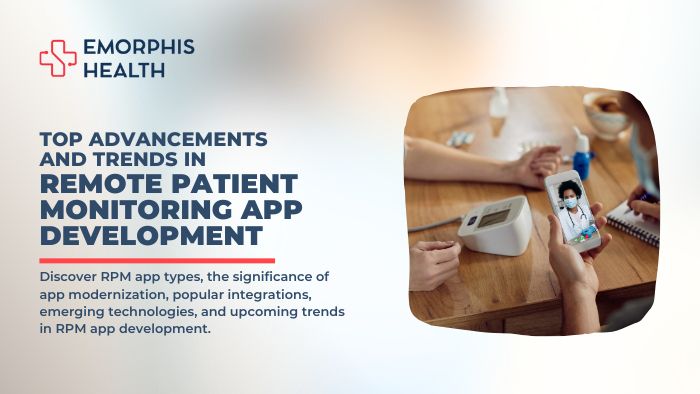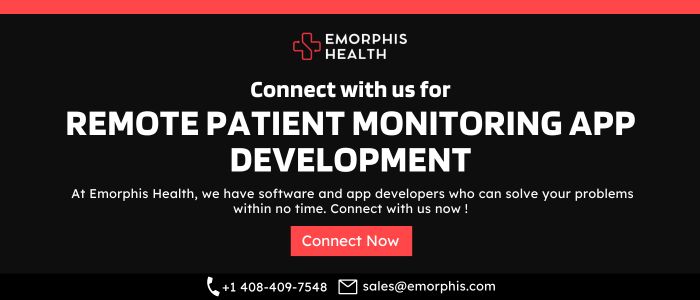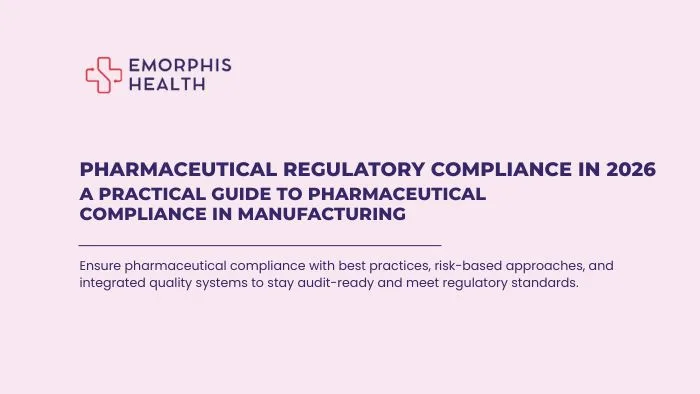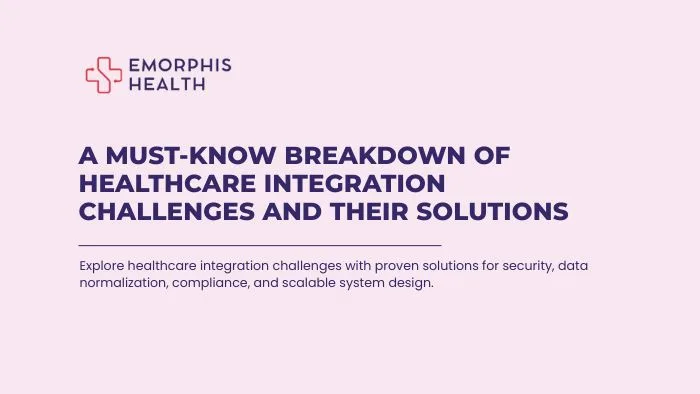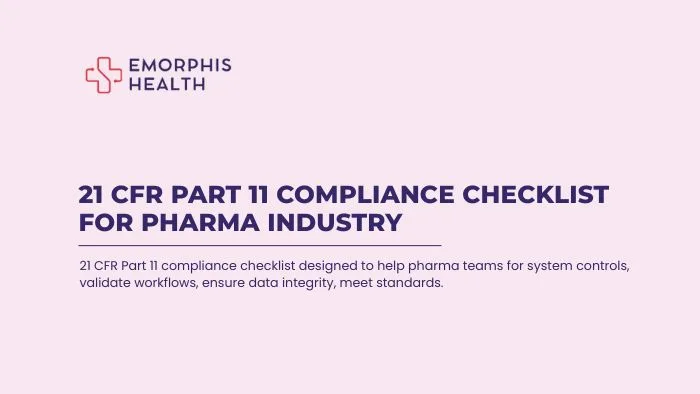Overcoming Healthcare Industry Challenges through Remote Patient Monitoring App Development
See Contents
- 1 Overcoming Healthcare Industry Challenges through Remote Patient Monitoring App Development
- 2 Types of Remote Patient Monitoring App Development
- 3 The Necessity of Remote Patient Monitoring (RPM) App Modernization
- 4 Popular Integrations with Remote Patient Monitoring (RPM) Applications
- 5 Latest Technology Helping Advancements in Remote Patient Monitoring App Development
- 6 Advancements To Be Anticipated In RPM
- 7 Top Trends in Remote Patient Monitoring App Development and Software Development in 2023-24
- 8 Conclusion
The healthcare industry is constantly facing numerous challenges, ranging from limited access to healthcare services to rising costs and an aging population burdened with chronic diseases. However, advancements in technology, particularly Remote Patient Monitoring (RPM) app development, are poised to revolutionize the healthcare landscape. RPM apps offer a proactive and convenient approach to healthcare by enabling remote monitoring of patient’s health conditions and vital signs. Now, let us check the challenges of the healthcare industry that RPM app development is addressing. Also, have a look at the highlights of how these apps are overcoming obstacles and transforming patient care.
1. Limited Access to Healthcare
Many individuals, particularly those in rural or underserved areas, face limited access to healthcare services due to geographical barriers or shortages of healthcare providers. RPM apps bridge this gap by bringing healthcare services directly to patients’ homes, eliminating the need for physical visits. Also, patients can connect with healthcare providers virtually, enabling timely and convenient access to medical expertise and reducing the burden on traditional healthcare facilities.
2. Rising Healthcare Costs
Healthcare costs continue to soar, putting a strain on both patients and healthcare systems. Remote patient monitoring app development offers a cost-effective solution by reducing hospital readmissions and emergency room visits. Through continuous remote monitoring, healthcare providers can identify potential health complications early. Which leads to proactive interventions and also preventing the escalation of conditions that may require expensive hospitalizations. By managing chronic diseases and detecting warning signs promptly, RPM apps contribute to overall cost savings for patients and healthcare organizations alike.
3. Chronic Disease Management
The prevalence of chronic diseases, such as diabetes, hypertension, and heart disease, poses significant challenges for the healthcare industry. RPM apps provide continuous monitoring and management of these conditions. patients can track their vital signs, medication adherence, and symptoms from the comfort of their homes. Healthcare providers can remotely monitor the data and intervene when necessary, adjusting treatment plans or providing timely guidance. By empowering patients to take an active role in managing their conditions, RPM apps improve disease management outcomes and also enhance patients’ quality of life.
4. Aging Population
The aging population presents unique challenges, including increased healthcare needs and a higher risk of chronic diseases. RPM app development caters to the elderly population by enabling remote monitoring and support. Fall detection apps and activity monitoring apps help ensure the safety and well-being of older adults, in fact reducing the risk of injuries and enabling early interventions. Medication management apps assist seniors in adhering to medication schedules, reducing medication errors, and improving overall health outcomes.
5. Healthcare Provider Shortage
The shortage of healthcare providers is a persistent challenge, particularly in underserved areas. RPM apps extend the reach of healthcare professionals, enabling them to remotely monitor and care for more patients. Healthcare providers can review patient data, track trends, and also prioritize interventions based on criticality. This increased efficiency allows healthcare providers to deliver timely care to a larger patient population. Thus improving access and optimizing the utilization of limited healthcare resources.
Types of Remote Patient Monitoring App Development

Remote Patient Monitoring (RPM) app development has revolutionized the healthcare industry, enabling healthcare providers to remotely monitor and manage patients’ health conditions. In fact, these apps leverage technology and connected devices to collect and transmit patient data, allowing healthcare professionals to track vital signs, manage chronic diseases, and provide timely interventions. Lets us now explore the various types of RPM app development, also highlighting the specific functionalities and benefits they offer in patient care.
A. Vital Sign Monitoring Apps
Vital sign monitoring apps focus on tracking and monitoring essential physiological parameters. In fact, providing valuable insights into patients’ health status. Some common types of vital sign monitoring apps include:
- Heart Rate Monitoring Apps: These apps measure and track a patient’s heart rate and rhythm. They enable healthcare providers to detect irregularities, assess cardiac health, and also monitor the effectiveness of cardiac treatments.
- Blood Pressure Monitoring Apps: Blood pressure monitoring apps allow patients to measure and record their blood pressure readings from home. In fact, these apps help in the management of hypertension, enabling healthcare providers to monitor patients remotely and adjust treatment plans as needed.
- Blood Glucose Monitoring Apps: Designed for individuals with diabetes, blood glucose monitoring apps help track and monitor blood sugar levels. In fact, patients can input their readings from glucose meters, and healthcare providers can review the data to manage and adjust diabetes treatment plans effectively.
B. Chronic Condition Management Apps
Chronic condition management apps aim to assist patients in effectively managing their long-term health conditions. These apps often provide personalized tools and resources for disease management. Some examples include:
- Diabetes Management Apps: These apps help individuals with diabetes monitor their blood glucose levels, track medication adherence, and manage lifestyle factors such as diet and exercise. They often offer features like glucose tracking, meal planning, medication reminders, and data visualization for better self-management.
- Asthma Management Apps: Asthma management apps empower patients to monitor their symptoms, track medication usage, and record peak flow measurements. These apps provide educational resources, medication reminders, and personalized action plans to help individuals proactively manage their asthma.
- Hypertension Management Apps: Hypertension management apps allow patients to track their blood pressure readings, manage their medication schedules, and monitor lifestyle factors such as physical activity and stress levels. They often provide educational materials, medication reminders, and progress-tracking features.
C. Post-operative Care Apps
Post-operative care apps assist patients in their recovery after surgery by providing guidance and support remotely. These apps focus on areas such as wound care, pain management, and medication adherence. Examples include:
- Wound Care Apps: Wound care apps enable patients to capture images of their surgical wounds and share them with healthcare providers for assessment and guidance. These apps facilitate remote monitoring, reducing the need for frequent in-person visits.
- Pain Management Apps: Pain management apps help patients track their pain levels, medication usage, and side effects following surgery. They often provide pain assessment tools, medication reminders, and educational resources to support patients’ pain management journey.
- Medication Adherence Apps: These apps help patients adhere to their prescribed medication regimens by providing reminders, dosage instructions, and refill alerts. Also, medication adherence apps ensure that patients take their medications as prescribed, reducing the risk of complications and improving postoperative outcomes.
D. Elderly and Aging Population Apps
Apps targeting the elderly and aging population focus on ensuring their well-being, safety, and independence. These apps address concerns such as fall detection, medication management, and activity monitoring. Examples include:
- Fall Detection Apps: Fall detection apps utilize sensors or accelerometers to detect falls and send alerts to caregivers or emergency services. in fact, they provide an added layer of safety for seniors, enabling timely assistance in the event of a fall.
- Medication Management Apps: Medication management apps assist seniors in organizing their medications, providing reminders for doses, and also facilitating medication refill management. These apps help prevent medication errors and support medication adherence among the elderly.
- Activity Monitoring Apps: Activity monitoring apps track the daily activities and exercise levels of seniors, promoting an active lifestyle and ensuring overall well-being. in fact, these apps often integrate with wearable devices to capture data on steps taken, calories burned, and sleep patterns.
Check out Healthcare Case Studies for more details on such applications.
The Necessity of Remote Patient Monitoring (RPM) App Modernization
In an era of rapid technological advancements, healthcare systems must embrace innovation and continuously modernize their practices. Remote Patient Monitoring (RPM) app modernization is crucial to ensure that healthcare providers can leverage the full potential of RPM technology and deliver optimal patient care. Hence, now let us explore the reasons why RPM software or Remote Patient Monitoring app modernization is necessary and the benefits it brings to both healthcare providers and patients.
1. Enhanced User Experience
Modernizing RPM apps improves the overall user experience for both healthcare providers and patients. By updating the app’s user interface (UI) and user experience (UX), it becomes more intuitive and user-friendly. Also, an enhanced UI/UX allows healthcare providers to navigate the app seamlessly, access patient data efficiently, and make informed clinical decisions. For patients, a user-friendly app interface promotes engagement, encourages adherence to monitoring protocols, and also empowers them to take an active role in their healthcare.
2. Scalability and Interoperability
As the healthcare landscape evolves, Remote Patient Monitoring apps need to be scalable and interoperable to keep pace with emerging technologies and also integrate seamlessly with other healthcare systems. in fact, modernizing RPM software or a Remote Patient Monitoring app ensures compatibility with evolving hardware, software, and communication standards. This enables the integration of new devices, wearables, and IoT technologies, expanding the scope and capabilities of remote patient monitoring. Interoperability with electronic health record (EHR) systems and also other healthcare platforms allows for seamless data sharing and comprehensive patient care coordination.
3. Security and Compliance
Remote Patient Monitoring app modernization places a strong focus on security and compliance. As healthcare data becomes increasingly digital, it is essential to implement robust security measures to protect patient privacy and sensitive medical information. In fact, modernized apps incorporate advanced encryption protocols, secure data transmission channels, and secure storage solutions, ensuring that patient data is protected from unauthorized access and cyber threats. Compliance with data protection regulations, such as HIPAA in the United States, helps healthcare organizations adhere to legal requirements and maintain patient trust.
4. Performance Optimization
Modernizing RPM apps improves performance and functionality. By leveraging the latest technologies, frameworks, and also development practices, app modernization optimizes response times, enhances data transmission reliability, and ensures seamless connectivity. In fact, these improvements are crucial for real-time remote monitoring, as delays or disruptions in data transmission can have significant consequences on patient care. With enhanced performance, healthcare providers can access and analyze patient data more efficiently, leading to timely interventions and proactive decision-making.
5. Integration with Advanced Technologies
RPM app modernization allows for integration with advanced technologies that can further enhance patient care. For example:
- Artificial Intelligence (AI) and Machine Learning (ML): Integrating AI/ML algorithms into Remote Patient Monitoring apps enables the analysis of large datasets, identifying patterns, predicting health risks, and providing personalized insights for patients and healthcare providers.
- Internet of Things (IoT): Modernized RPM apps can connect with IoT devices and sensors, enabling real-time monitoring of vital signs, environmental conditions, and activity levels. This integration enhances data accuracy and also enables comprehensive health monitoring.
- Telemedicine and Virtual Consultations: Modernized RPM apps can seamlessly integrate with telemedicine platforms, facilitating virtual consultations and also remote communication between healthcare providers and patients. This integration expands access to healthcare services, particularly for patients in remote areas or with limited mobility.
6. Future-Proofing
RPM app modernization ensures that healthcare organizations are future-proofed and prepared for upcoming advancements in technology and healthcare practices. By continuously updating and evolving RPM apps, healthcare providers can adapt to changing patient needs, regulatory requirements, and also industry trends. In fact, this flexibility enables healthcare organizations to stay at the forefront of remote patient monitoring, capitalize on new opportunities, and deliver the highest standard of care.
Popular Integrations with Remote Patient Monitoring (RPM) Applications
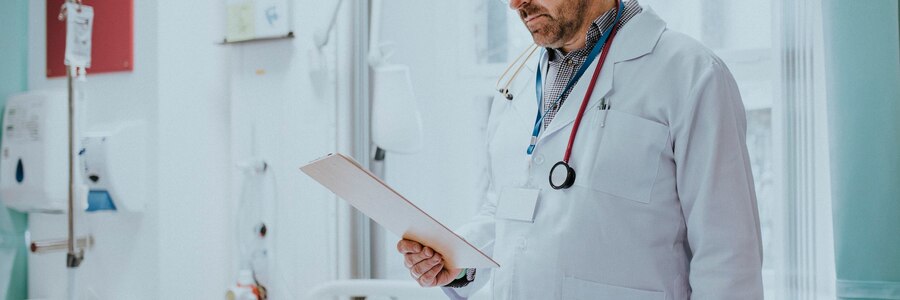
Remote Patient Monitoring (RPM) applications have transformed healthcare by enabling the remote monitoring and management of patient health conditions. In fact, these applications leverage integrations with various technologies and platforms to enhance their functionality, data analysis capabilities, and connectivity. Now, let us explore popular integrations with RPM applications, also highlighting how these integrations contribute to improved patient care and healthcare outcomes.
a. Electronic Health Record (EHR) Integration
Integration with Electronic Health Record systems is vital for RPM applications as it allows a seamless exchange of patient data between healthcare providers and the Remote Patient Monitoring platform, system, app, software, or solution. In fact, this integration ensures that the patient’s health information, including medical history, diagnoses, medications, and test results, is readily available to healthcare professionals. By accessing comprehensive patient data from the EHR, in fact, healthcare providers can make informed decisions, tailor treatment plans, and monitor the effectiveness of interventions.
b. Wearable Devices and Sensors
Integration with wearable devices and sensors enhances the capabilities of RPM applications by enabling real-time monitoring of vital signs, activity levels, and other health-related metrics. Popular wearable devices, such as smartwatches, fitness trackers, and continuous glucose monitors, can transmit data directly to the RPM application. This integration provides a continuous stream of patient data, allowing healthcare providers to monitor health trends, detect anomalies, and intervene promptly.
c. Telemedicine and Video Conferencing
Integrating RPM applications with telemedicine and video conferencing platforms enables virtual consultations and remote communication between healthcare providers and patients. Telemedicine integration allows healthcare professionals to remotely assess patient conditions, provide guidance, and discuss treatment plans. Video conferencing capabilities enhance patient engagement and facilitate meaningful interactions, replicating the benefits of in-person consultations while eliminating geographical barriers.
Check out the complete guide on Telemedicine app development solutions
d. Medication Management Systems
Integration with medication management systems streamlines the process of medication adherence monitoring and support. In fact, by integrating RPM applications with medication management platforms, healthcare providers can receive real-time alerts and reminders about medication adherence. This integration helps ensure that patients adhere to their prescribed medication regimens, also reducing the risk of complications and improving health outcomes.
e. Health Information Exchange (HIE)
Integration with Health Information Exchange networks allows secure and seamless sharing of patient health information across healthcare organizations and providers. RPM applications integrated with HIE networks enable authorized healthcare professionals to access and contribute to a patient’s health records, regardless of the healthcare facility they are associated with. This integration promotes care coordination, reduces duplication of tests and procedures, and also improves continuity of care.
f. Artificial Intelligence (AI) and Data Analytics
Integrating RPM applications with AI and data analytics platforms enhances the analysis of patient data, providing valuable insights and predictive capabilities. AI algorithms can identify patterns, detect anomalies, and also generate personalized recommendations for patient care. Data analytics integration enables healthcare providers to derive meaningful insights from large volumes of patient data, facilitating proactive interventions and personalized treatment plans.
g. Patient Engagement and Education
Integration with patient engagement and education platforms helps empower patients and improve health literacy. RPM applications can be integrated with portals or mobile applications that provide educational resources, also personalized health information, and tools for self-management. In fact, these integrations promote patient engagement, encourage adherence to treatment plans, and empower patients to participate in their own healthcare journey actively.
Now lets us delve into technology and advancements we should have a look at for Remote Patient Monitoring.
Latest Technology Helping Advancements in Remote Patient Monitoring App Development

The field of Remote Patient Monitoring (RPM) is continuously evolving, driven by advancements in technology. Several emerging technologies are poised to further enhance the growth and capabilities of RPM applications. Let’s explore some of the latest technologies that will contribute to the expansion of RPM software and also the future updates that hold promise for this field.
1. Internet of Things (IoT)
The proliferation of IoT devices will greatly impact RPM. IoT devices, such as connected wearable sensors, smart home devices, and medical devices, can seamlessly collect and transmit patient data to RPM applications. In fact, this technology allows for real-time monitoring of vital signs, activity levels, and environmental factors, enabling healthcare providers to better understand patients’ health conditions.
2. Artificial Intelligence (AI) and Machine Learning (ML)
AI and ML have the potential to revolutionize RPM by analyzing large volumes of patient data and providing predictive insights. By leveraging AI algorithms, RPM applications can detect patterns, identify anomalies, and in fact, generate personalized recommendations for treatment and care management. AI-powered chatbots and virtual assistants can also enhance patient interactions and provide timely support.
3. Data Analytics and Predictive Modeling
Advanced data analytics techniques, coupled with predictive modeling, will enable healthcare providers to derive meaningful insights from RPM data. By analyzing historical data, trends, and patterns, healthcare professionals can predict health risks, anticipate deteriorations, and also proactively intervene to prevent adverse events. These insights will lead to more targeted and effective interventions, improving patient outcomes.
4. Cloud Computing
Cloud-based infrastructure and services offer scalability, accessibility, and secure storage for RPM applications. Cloud computing enables real-time data processing, storage, and analysis, in fact, facilitating the seamless exchange of patient information across healthcare systems. It also allows for remote access to RPM applications, enabling healthcare providers to monitor patients from any location, and enhancing the flexibility and efficiency of care delivery.
5. Blockchain Technology
Blockchain holds promise for ensuring secure and immutable data storage and exchange in RPM. By leveraging blockchain, RPM applications can enhance data security, privacy, and also interoperability. Blockchain technology can enable patients to have ownership and control over their health data while ensuring its integrity and accessibility across different healthcare providers.
Looking toward the future, there are several updates and advancements to be anticipated in RPM.
Advancements To Be Anticipated In RPM
1. Enhanced Remote Monitoring Capabilities
RPM applications will continue to expand their monitoring capabilities beyond vital signs to encompass a wider range of health parameters. This includes monitoring mental health, sleep patterns, medication adherence, and other relevant health markers. Additionally, the integration of more advanced sensors and devices will provide richer and more accurate data for healthcare providers.
2. Continuous Innovation in Sensor Technology
Advancements in sensor technology will enable the development of more sophisticated and accurate monitoring devices. Miniaturized sensors, wearables with advanced functionalities, and implantable devices will contribute to seamless data collection, higher precision, and improved patient comfort during remote monitoring.
3. Improved User Experience and Interface
Future updates will focus on enhancing the user experience of RPM applications, making them more intuitive, personalized, and user-friendly for both healthcare providers and patients. Streamlined interfaces, intelligent notifications, and customizable dashboards will empower users to easily navigate and interact with the application, facilitating better engagement and adherence.
4. Interoperability and Standardization
Efforts will be made to establish interoperability standards and frameworks to facilitate seamless data exchange between RPM applications, EHR systems, and other healthcare platforms. Standardization will ensure compatibility, promote data sharing, and enable comprehensive patient care coordination across different healthcare settings.
5. Integration of Virtual Reality (VR) and Augmented Reality (AR)
VR and AR technologies have the potential to enhance remote patient monitoring by providing immersive experiences and simulations. It holds potential for RPM applications by creating immersive healthcare experiences. These technologies can simulate environments for training healthcare providers, offer virtual patient education programs, and facilitate remote assistance during complex procedures, enhancing remote patient monitoring and care delivery. AR/VR technologies can also facilitate virtual training for healthcare professionals, enable remote rehabilitation programs, and improve patient education and engagement.
6. Mobile App Integration
RPM applications will increasingly integrate with mobile apps to enhance patient engagement and accessibility. Patients can conveniently access their health data, receive personalized notifications, and communicate with healthcare providers through mobile devices, promoting continuous monitoring and proactive care management.
7. Telehealth Integration
The integration of RPM with telehealth platforms will enable seamless virtual consultations and remote healthcare delivery. This integration will allow healthcare providers to remotely assess patients’ conditions, provide real-time guidance, and monitor progress, fostering greater access to healthcare services and reducing the need for in-person visits.
8. Voice Recognition and Natural Language Processing
RPM applications may incorporate voice recognition and natural language processing technologies to enable voice-controlled interactions and automate data input. This advancement will simplify data entry, enhance user experience, and enable hands-free operation, particularly beneficial for patients with limited mobility.
9. Remote Diagnostics
Advancements in RPM will enable the integration of remote diagnostic tools and devices. This may include technologies such as smartphone-based diagnostic attachments, point-of-care testing devices, and remote imaging capabilities. Remote diagnostics will enable healthcare providers to perform diagnostic procedures and obtain critical information without patients needing to visit a healthcare facility.
10. Remote Surgical Monitoring
RPM applications may expand to include remote monitoring of patients during surgical procedures. By integrating with surgical equipment and monitoring systems, healthcare providers can remotely track vital signs, anesthesia levels, and surgical outcomes. This advancement has the potential to improve surgical safety, facilitate early intervention, and minimize complications.
11. Enhanced Data Visualization and Analytics
Future updates in RPM will focus on improving data visualization and analytics capabilities. Advanced data visualization techniques, such as interactive dashboards and visual representations of patient data trends, will aid in the interpretation and analysis of RPM data. This will empower healthcare providers to make data-driven decisions and identify actionable insights more efficiently.
12. Ethical and Regulatory Considerations
As RPM evolves, ethical considerations surrounding patient privacy, data security, and consent will become increasingly important. Future updates should focus on addressing these concerns through robust data protection measures, transparent data governance practices, and also adherence to relevant regulations and standards.
Top Trends in Remote Patient Monitoring App Development and Software Development in 2023-24
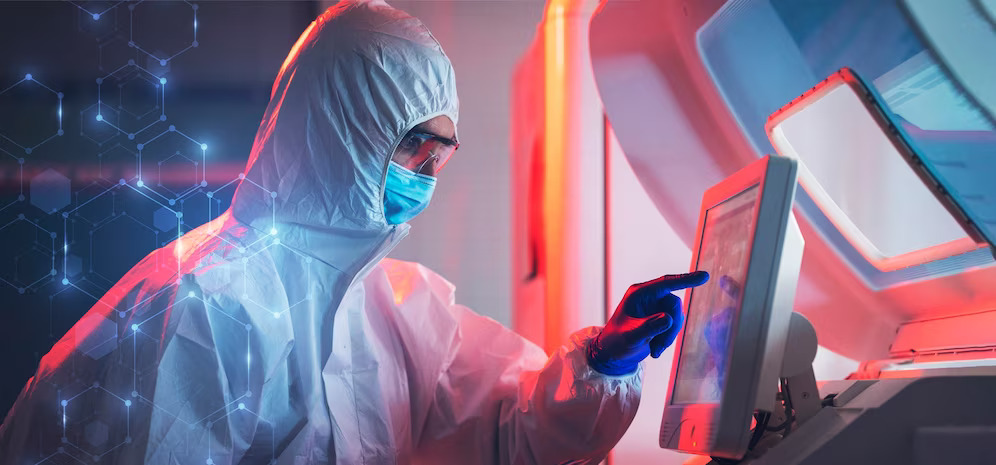
Remote Patient Monitoring (RPM) has gained significant traction in the healthcare industry, transforming the way patient care is delivered. As technology continues to advance, new trends emerge in RPM app development and software development. Now, let us explore the top trends expected to shape the landscape of RPM in 2023-24 and beyond. As a matter of fact, these trends reflect the ongoing efforts to enhance patient care, improve user experience, and leverage cutting-edge technologies.
1. Integration of Artificial Intelligence (AI) and Machine Learning (ML)
AI and ML will play a prominent role in RPM app development, enabling advanced data analysis, predictive modeling, and also personalized care. AI algorithms will help detect patterns, anomalies, and trends in patient data, facilitating early intervention and improved decision-making. Also, ML algorithms will continuously learn from data to provide more accurate and personalized health insights, assisting healthcare providers in delivering targeted and proactive care.
2. Expansion of Wearable Devices and Internet of Things (IoT) Integration
The proliferation of wearable devices and IoT technologies will continue to drive RPM app development. Wearable devices, such as smartwatches, fitness trackers, and biosensors, will provide real-time patient data, including vital signs, activity levels, and sleep patterns. Integration with IoT will enable seamless connectivity between various devices and RPM apps, also allowing comprehensive remote monitoring and analysis of patient health parameters.
3. Enhanced User Experience and Mobile App Accessibility
In 2023-24, RPM apps will focus on improving the user experience and accessibility for both patients and healthcare providers. User-friendly interfaces, intuitive navigation, and personalized dashboards will enhance the ease of use and engagement. in fact, mobile app accessibility will be emphasized to provide convenient access to RPM functionalities, allowing patients to actively participate in their care management and healthcare providers to access patient data on the go.
4. Emphasis on Data Security and Privacy
As RPM app development progresses, ensuring data security and privacy will remain a top priority. Robust encryption techniques, secure cloud storage, and also adherence to privacy regulations will be integral to protecting patient information. Healthcare app developers will implement measures to safeguard data during transmission, storage, and access, fostering trust among patients, healthcare providers, and regulatory authorities.
5. Seamless Integration with Electronic Health Record (EHR) Systems
Integration between RPM apps and EHR systems will be crucial to enable seamless data exchange and care coordination. RPM apps will synchronize patient data with EHRs, allowing healthcare providers to access comprehensive patient records and make informed decisions. This integration will improve the continuity of care, eliminate duplicate data entry, and also enhance the efficiency of healthcare workflows.
6. Remote Patient Monitoring in Specialized Healthcare Areas
Remote patient monitoring app development will witness increased focus on specialized healthcare areas such as chronic disease management, mental health, and post-operative care. Tailored RPM solutions will be designed to address the unique needs of these areas, providing targeted interventions, remote support, and personalized care plans. This trend will enhance patient outcomes, optimize resource utilization, and reduce the burden on healthcare systems.
List of Specialized Healthcare Areas Getting Assistance of Remote Patient Monitoring App Development
- Cardiology: Remote patient monitoring app development can be utilized to monitor patients with cardiovascular conditions, such as heart disease, arrhythmias, or heart failure. RPM apps can track vital signs, such as heart rate, blood pressure, and ECG readings, providing real-time data for cardiologists to assess patients’ cardiac health remotely.
- Pulmonology: RPM app development can be beneficial for patients with respiratory conditions, such as asthma, chronic obstructive pulmonary disease (COPD), or sleep apnea. By incorporating spirometry data, oxygen saturation levels, and respiratory symptom tracking, RPM apps can assist pulmonologists in monitoring patients’ lung function and respiratory health.
- Oncology: RPM software development can play a role in cancer care by remotely monitoring patients undergoing chemotherapy or other cancer treatments. RPM apps can track vital signs, side effects, medication adherence, and symptoms related to cancer treatment, allowing oncologists to remotely assess patients’ well-being and make necessary interventions.
- Nephrology: Patients with kidney diseases, such as chronic kidney disease (CKD) or end-stage renal disease (ESRD), can benefit from RPM. By monitoring parameters like blood pressure, electrolyte levels, and fluid intake/output, RPM apps can aid nephrologists in managing patients’ kidney health, adjusting medication regimens, and preventing complications.
- Geriatrics: Remote patient monitoring app development can be particularly valuable for elderly patients who may have multiple chronic conditions and require ongoing monitoring. RPM apps can track vital signs, medication adherence, fall detection, and activity levels, helping geriatric specialists provide timely interventions, assess overall well-being, and promote independent living.
- Mental Health: Remote patient monitoring app development can be extended to mental health monitoring and support, offering assistance for conditions such as depression, anxiety, or bipolar disorder. RPM apps can enable remote tracking of mood, sleep patterns, medication adherence, and behavioral changes, allowing mental health professionals to monitor patients’ progress, identify potential crises, and provide timely interventions.
7. Advancements in Data Analytics and Real-time Insights
Advancements in data analytics and real-time insights will revolutionize RPM software development. RPM applications will employ advanced algorithms and predictive analytics to analyze patient data and generate real-time insights for healthcare providers. Real-time monitoring, analysis, and visualization of patient health parameters will provide healthcare providers with actionable insights. RPM software will offer intelligent alerts and notifications based on data trends, enabling timely interventions and proactive care management. For instance, AI-powered algorithms can detect abnormal trends in patient vitals, triggering alerts for healthcare providers to intervene promptly. Additionally, real-time analytics will enable healthcare professionals to monitor patient progress, track treatment efficacy, and make data-driven adjustments to care plans. This trend empowers healthcare providers to deliver personalized, targeted care and optimize patient outcomes through informed decision-making.
8. Telehealth Integration and Virtual Care Expansion
Integration of RPM apps with telehealth platforms will continue to facilitate virtual consultations, remote monitoring, and telemedicine services. RPM software development will focus on seamless integration with video conferencing, chatbot support, and telehealth infrastructure. This trend will enhance the accessibility of healthcare services, particularly in remote areas, and promote continuity of care beyond physical clinical settings.
Conclusion
In the future, remote patient monitoring app development and software development will witness significant advancements and innovative trends. The integration of AI, expansion of wearable devices, improved user experience, and emphasis on data security will shape the future of Remote patient monitoring. Seamless integration with EHR systems, specialized healthcare areas, and real-time data analytics will revolutionize remote patient monitoring. The integration of telehealth and virtual care will further enhance the accessibility and continuity of healthcare services. As these trends unfold, patients and healthcare providers can expect more personalized, efficient, and effective care delivery through RPM solutions.
Emorphis is a leading remote patient monitoring app development and healthcare software product engineering company specializing in delivering innovative solutions for remote patient monitoring. With their expertise in healthcare technology and software development, Emorphis offers comprehensive services to design, develop, and also deploy custom remote patient monitoring app development to meet the unique needs of healthcare providers and patients. The team of skilled professionals are dedicated to creating user-friendly and secure healthcare software solutions that enable seamless data collection, analysis, and also real-time monitoring. By partnering with Emorphis, healthcare organizations, providers, and healthcare professionals can leverage their cutting-edge technology and industry knowledge to enhance patient care, also improve outcomes, and optimize healthcare delivery through remote patient monitoring.
Also, have a look at our complete Guide to Developing a Remote Patient Monitoring App.
